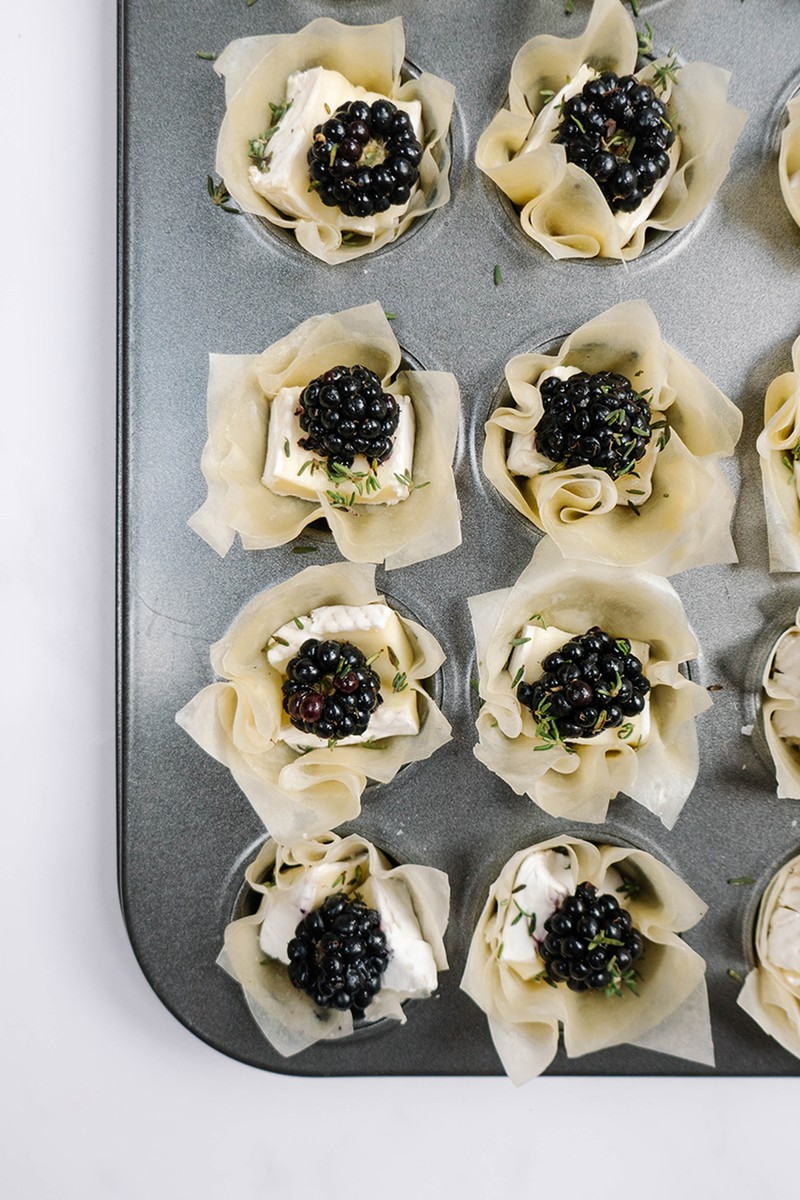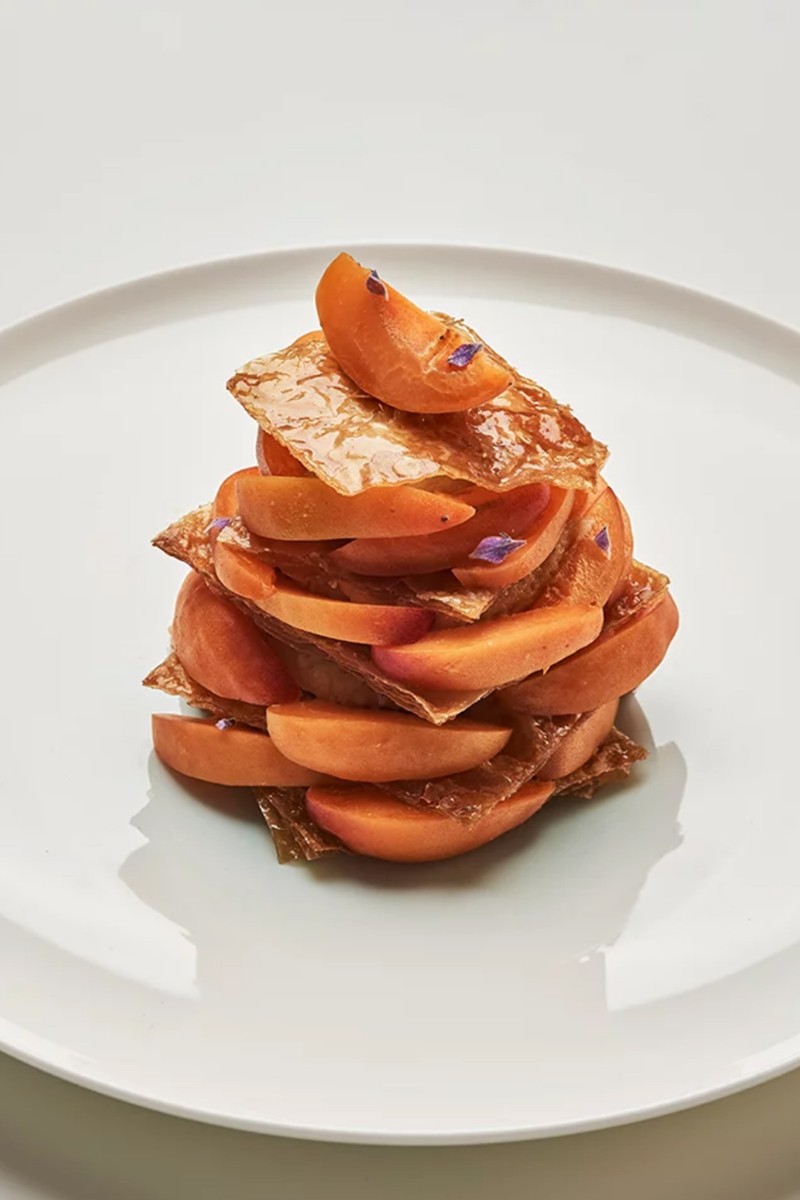Ways To Cook With Filo Pastry
Mimi Morley, HelloFresh
“Filo pastry is a crisp, paper-thin pastry that works well for both sweet and savoury dishes. It’s important to remember that it dries out fast, though, so keep any pastry you’re not using completely covered. My tip is to use cling film or a damp cloth to retain the moisture while you’re preparing other parts of the dish before you use your pastry. I always encourage people to get creative with this kind of pastry. As well as using melted butter, you can also use oil spray as a substitute to bind the filo sheets together and gently brush or spray each sheet generously to make it easy to shape. Give the outer layer a bit more attention to ensure that it cooks with crispness and a deep golden colour. You can also increase the stability of your dish by layering the pastry sheets for extra thickness.”
Cesar Fernandez, Miele GB
“The number one tip for working with filo pastry is to use it as quickly as possible. For the best results, use either melted butter or olive oil to brush the pastry, layering several sheets of pastry if you are making a pie. Filo is ideal if you want to make healthier samosas or spring rolls, as they don't need to be deep fried and can instead be oven baked. If you're making a strudel and want to keep the pastry as crisp as possible, make sure you combine the apples with a couple of tablespoons of breadcrumbs, which will soak up any excessive moisture. One of my favourite ways to use filo is to make a braised short rib parcel served with some grilled bavette steak, mushroom purée and braised carrots. It’s delicious at this time of year.”
Halit Deniz, Rüya
“When using filo pastry, you have to layer it up to add more crunch. So, my best tip is to keep the remaining pastry under a clean wet cloth while you’re layering. Practise if you are using a different brand to usual, as it really can make a difference. Filo pastry is super fun to cook with, as you can get so creative with the fillings – I like to opt for a cheese mix or a meat base, but it works just as well with a variety of vegetables.”
Inspired? Here Are Four Recipes To Try…

Blackberry, Brie & Thyme Filo Miniature Tarts
Preheat the oven to 180°C on the fan setting.
Keeping your pastry covered under a damp tea towel (to keep it from drying out). Remove one sheet and brush it with the melted butter. Using scissors cut this into roughly 5cm squares.
Arrange three squares and place them on top of each other turning them as you go so that you create almost a star effect. Place the pastry stack into the hole of the mini muffin tin and push to create a tartlet shell. Repeat until you have filled all 24 holes.
Chop the brie into roughly 24 equal sized pieces and push into each pastry case. Halve the blackberries and place one half on each tartlet. Sprinkle a pinch of thyme onto each tartlet and season with salt.
Bake for 10 minutes or until the pastry looks golden brown and the cheese has melted.
Sprinkle over some more fresh thyme and grind over a generous amount of black pepper. Serve right away.

Pineapple & Chilli Tart Tatin
Preheat the oven to 200°C/180°C Fan. Peel the pineapple and cut into 6 rings about 1.25cm thick.
Heat a non-stick frying pan and add the marmalade, caster sugar, chilli, grated zest of 1 lime, 50g of butter and 4 tbsp of water. Stir over a gentle heat for 2-3 minutes until the sugar and marmalade have dissolved.
Add the pineapple slices to the pan and simmer gently for 5-7 minutes, turning occasionally, until the pineapple is tender. Increase the heat and bubble until the liquid turns a golden brown and the pineapple has started to caramelize at the edges. Add the lime juice and remove from the heat.
Cut out six 15cm squares of foil. Place flat on 1 or 2 baking sheets and mark a 10cm circle on each one.
Put a pineapple slice and about 4 tsp of the cooking syrup in the centre of each piece of foil and bring up the edges to form sides around the pineapple. Keep the remaining syrup warm.
Place six sheets of filo pastry one on top of the other on the work surface and cut out 6 x 10cm rounds from the pile (36 rounds in total).
Melt the remaining butter and layer six rounds of filo pastry on top of each piece of pineapple, brushing very lightly with butter between each layer.
Bake in the hot oven for about 10 minutes or until the pastry is cooked and golden. Remove from the oven and leave to cool for a minute. Lift each piece of foil up and flip over onto a serving plate. Peel off the foil and top each tart with a scoop of vanilla ice-scream. Spoon over a little extra syrup and serve immediately.

Apricot Greek Milk Pie
Preheat your oven to 180°C.
Start with the filo pastry, which you have already cut into different sized squares. Butter each piece and stack each same-sized piece together so you have 6 piles, all different sizes. This will create an impressive tower shape when you serve your dessert.
Place the filo piles onto a baking tray, lined with greaseproof paper, and bake for 15 minutes until golden brown.
Meanwhile make your lavender syrup by adding all of the ingredients into a pan and bringing to a boil, before taking off the heat. Remove the sprigs of lavender.
Over a wire rack, pour the hot syrup over the hot cooked filo pastry and leave to cool until the pastry dries out and is crispy.
Bring the milk to the boil and add the semolina, whisking constantly until it boils and thickens.
In a separate bowl, whisk the eggs with the sugar and the vanilla. Take the milk mix off the heat and allow to cool slightly. When still warm, but not scorching, slowly start adding the milk mixtures to your bowl while whisking constantly. Add the butter and mix until it’s all emulsified.
mixture to cool down but mix it every 5 minutes so it doesn’t form a crust on top, then cover with clingfilm and place in the fridge for around an hour to set completely.
When set, remove from the fridge and whisk for a minute before transferring to a piping bag.
To serve, place the biggest piece of filo onto a serving dish. Pipe on a circle of cream, leaving space around the edge. Repeat until you’ve finished up all of the filo and you have a tower shape. Place the wedges of apricot into the layers of filo and cream. Serve immediately.

Pea, Asparagus & Artichoke Tart
Preheat the oven to 160°C and place a baking tray inside to heat up.
Whisk together the eggs and crème fraîche until smooth, season with salt and pepper then set aside.
Heat the olive oil in a frying pan then cook the shallots over a low heat, stirring often, until softened and golden. Set aside to cool.
Meanwhile, blanch the asparagus and peas in a pan of boiling water for 2-3 minutes then drain and tip into a bowl of iced water.
Now prepare the tart base. Stir together the melted butter and olive oil. Unwrap the filo pastry and lay between two damp tea towels to prevent it drying out as you work.
Brush a 20cm loose bottomed tin with the butter and oil mixture then lay a sheet of pastry into the tin, sticking it to the sides. Don’t worry if it doesn’t cover the whole surface, you can cover any gaps with the next sheet of pastry. Brush with more butter and oil then repeat the layers until you have used all of the pastry. Use scissors to trim the pastry into an even edge just above the tin. You may find it best to cut the pastry sheets in half to better fit your tin.
Stir the cooled shallots, peas and artichokes into the egg mixture then tip into the tart case. Lay the asparagus on top then sprinkle over the parmesan.
Slide the tin onto the hot baking tray in the oven and bake for 30 minutes or until the filling is just set then leave to cool in the tin.
Serve with pea shoots and a drizzle of lemon oil.
DISCLAIMER: We endeavour to always credit the correct original source of every image we use. If you think a credit may be incorrect, please contact us at info@sheerluxe.com.


